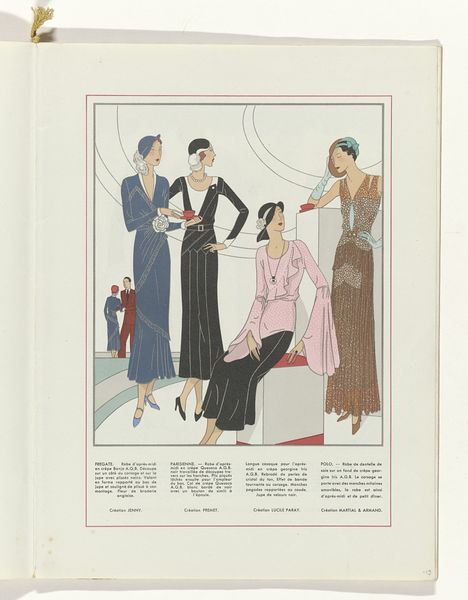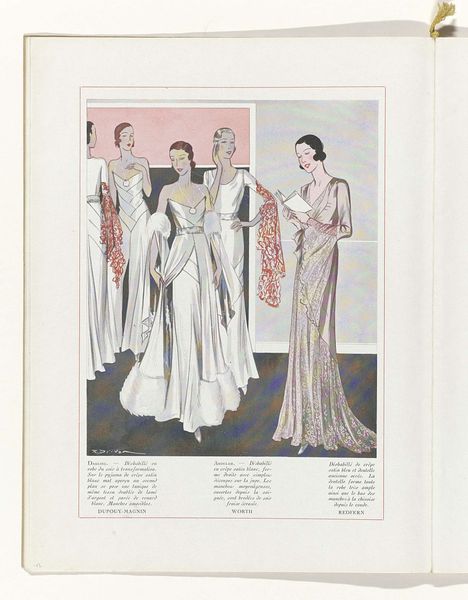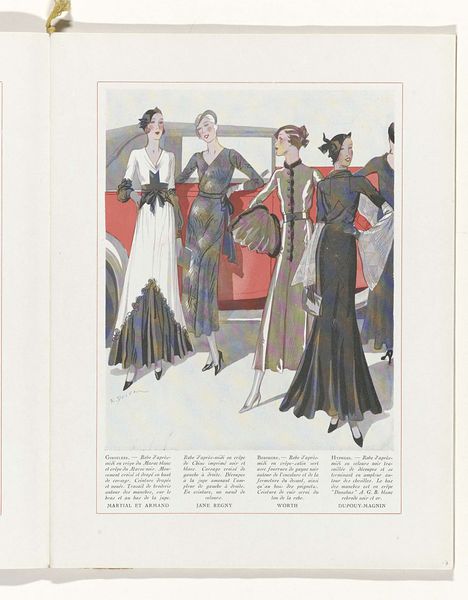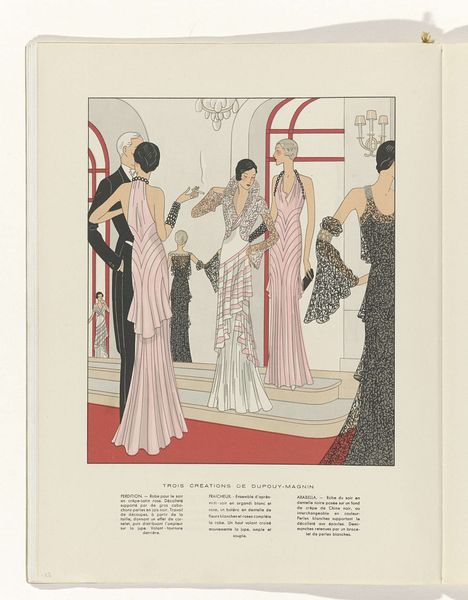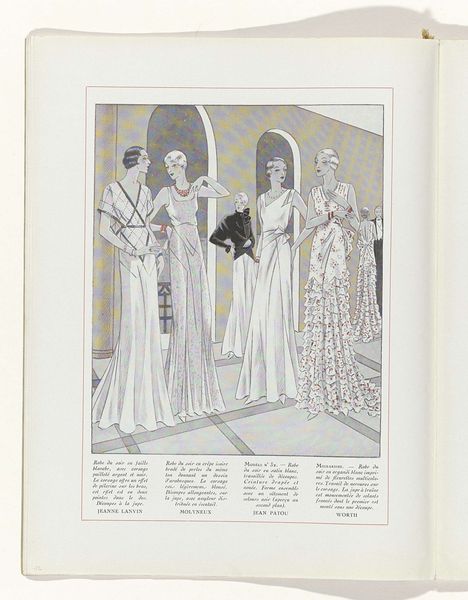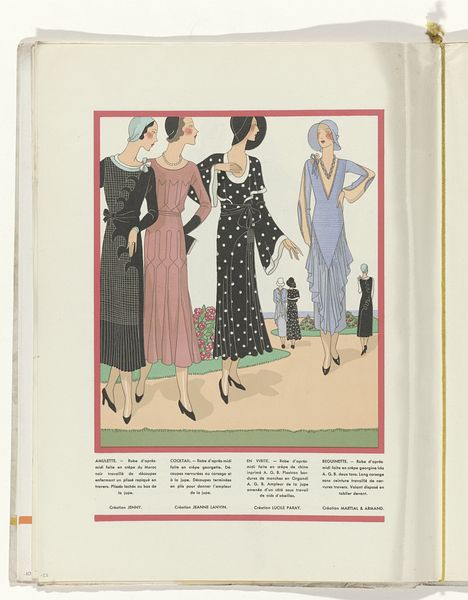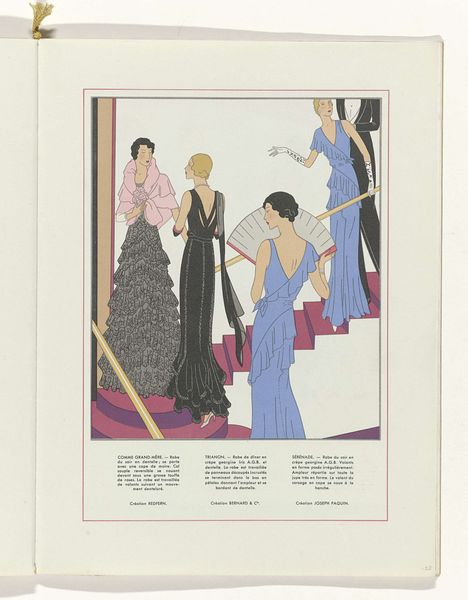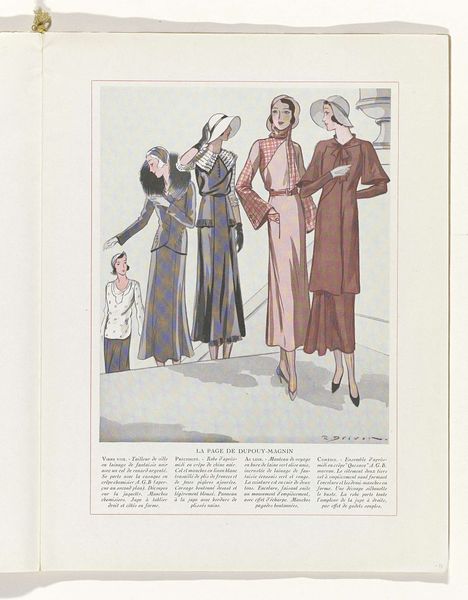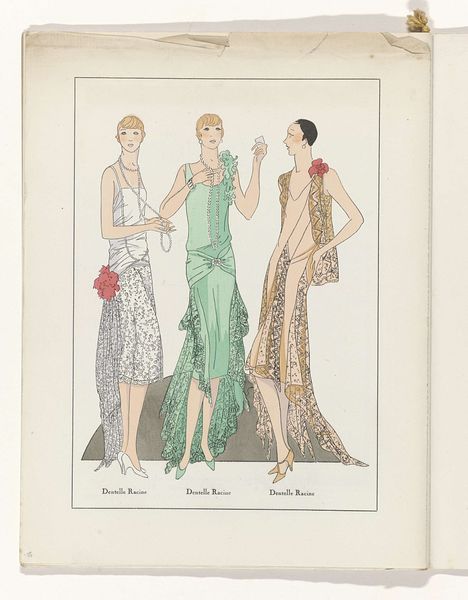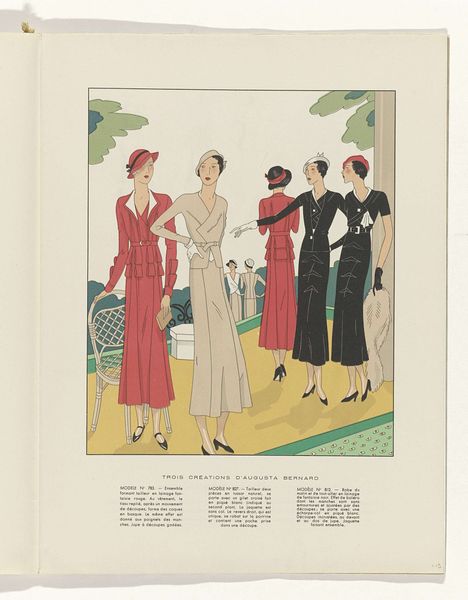
Art - Goût - Beauté, Feuillets de l' élégance féminine, Mai 1931, No. 129, 11e Année, p. 26 1931
0:00
0:00
Dimensions: height 315 mm, width 240 mm
Copyright: Rijks Museum: Open Domain
Curator: This artwork, titled "Art - Goût - Beauté, Feuillets de l'élégance féminine, Mai 1931," is a print from 1931, showcasing fashion designs from that era. The piece seems to be ink and watercolor on paper. Editor: Oh, it’s deliciously decadent! Look at these flapper ghosts! It’s as if they are parading from a smoky jazz club in the afterlife. There’s something slightly eerie, almost sad about the image to me… like faded elegance. Curator: Well, these weren't meant to be ghosts, exactly! This image, likely made for a magazine, speaks volumes about the cultural shifts happening in the early 1930s. We see a fascination with modernity in the sleek lines of the dresses, reflecting a society still reeling from the First World War but eager to embrace a new, albeit somewhat constrained, future for women. Editor: Constrained, how so? The hemlines look liberating. Curator: The flapper aesthetic, while visually daring, began facing resistance as economic hardships deepened with the Depression. There was a push for women to return to more "traditional" roles. Even these forward-looking designs hint at a return to longer silhouettes, perhaps mirroring societal expectations slowly tightening their grip. The designs move away from an overtly androgynous presentation towards an emphasis on gentle curves. Editor: Yes, I see that—it’s as if even fashion had to learn to be…subtle in its rebelliousness. Do you see the art deco influence? It's not overt, but those geometric patterns… particularly in that silvery grey dress on the left... that can’t be denied. Curator: Absolutely. Art Deco’s clean lines and geometric shapes provided a perfect visual language for the modern woman. What do you make of the muted colors? Editor: Subdued luxury. Everything is pale, refined, as if screaming would be gauche. This reflects something more than fashion - these drawings hint at an emotional austerity, even a sort of weary sophistication that resonates with how I understand the period between wars in Europe. It’s interesting how fashion can act like an emotional barometer of culture at large! Curator: Indeed. It's a potent reminder that fashion never exists in a vacuum; it's always reflecting and shaping the world around it. Editor: This little trip through ghostly Jazz Age elegance really stuck with me! I wonder how different our conversation would be if we encountered this image without knowing its original purpose.
Comments
No comments
Be the first to comment and join the conversation on the ultimate creative platform.

